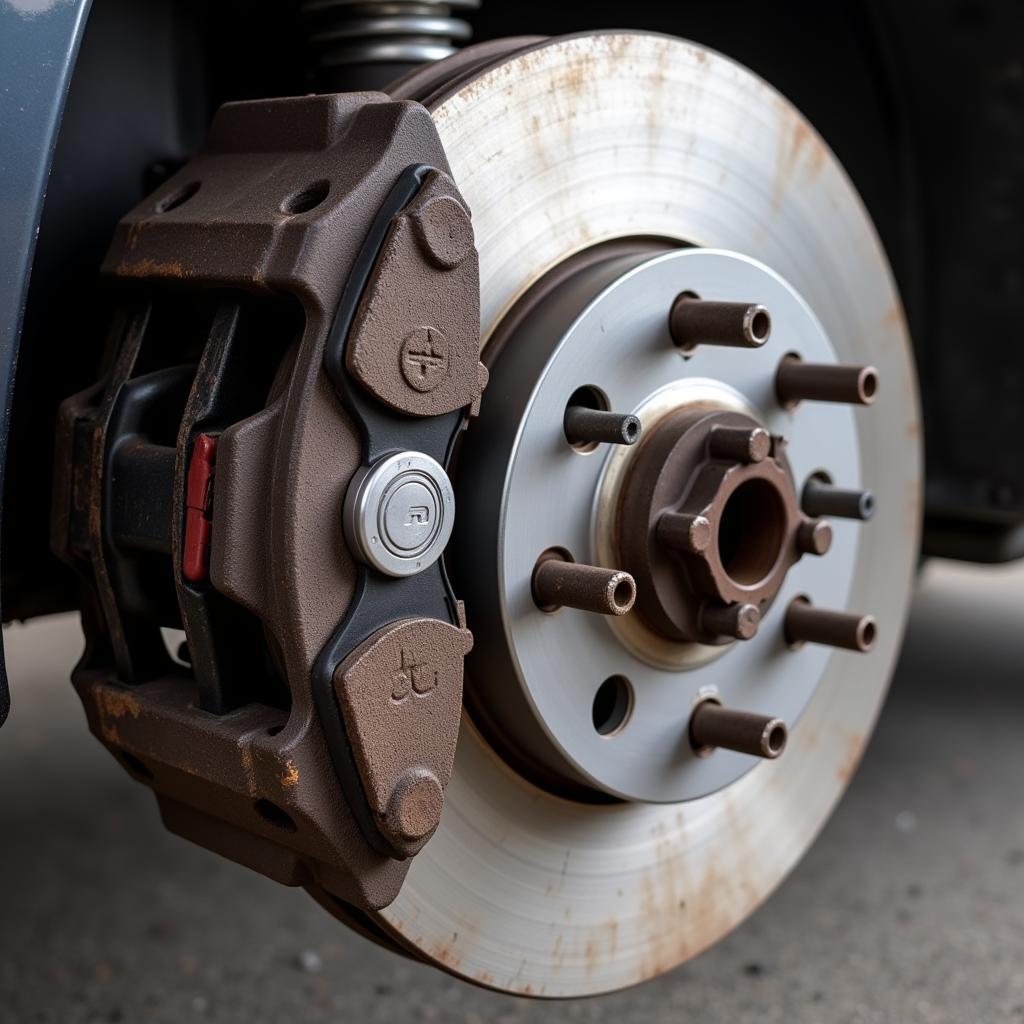Winter’s icy grip can wreak havoc on your car, and your battery is often the first casualty. Car battery issues in winter are a common occurrence, leaving drivers stranded in the cold. Understanding why cold weather affects your battery and knowing how to prevent and troubleshoot these issues can save you time, money, and a lot of frustration. Let’s dive into the common causes of car battery issues in winter and explore practical solutions.
Why Winter Wreaks Havoc on Car Batteries
Cold temperatures significantly reduce a car battery’s cranking power, which is the ability to deliver a high current to start the engine. The chemical reactions inside the battery slow down in the cold, making it harder for the battery to produce the necessary power.  Car Battery in Cold Weather Furthermore, the engine oil thickens in cold weather, requiring the battery to work even harder to turn over the engine. Additionally, winter often means increased use of electrical components like headlights, heaters, and defrosters, placing an additional strain on the battery.
Car Battery in Cold Weather Furthermore, the engine oil thickens in cold weather, requiring the battery to work even harder to turn over the engine. Additionally, winter often means increased use of electrical components like headlights, heaters, and defrosters, placing an additional strain on the battery.
Common Car Battery Problems in Winter
Several telltale signs indicate car battery issues in winter. These include:
- Slow cranking: The engine turns over slowly or struggles to start.
- Dim headlights: The headlights appear dimmer than usual, especially when the engine is idling.
- Clicking sound when turning the key: This indicates the battery doesn’t have enough power to engage the starter motor.
- Warning lights on the dashboard: Look out for battery or charging system warning lights.
- Swollen battery case: This can be caused by freezing and expansion of the battery’s internal components.
“A weak battery in summer can become a dead battery in winter,” says automotive engineer, David Miller. “Regular maintenance is key to preventing winter battery woes.”
Preventing Car Battery Issues in Winter
Proactive maintenance can help avoid car battery issues during the colder months. Here are some essential tips:
- Get your battery tested: Have a professional test your battery’s health before winter arrives. This helps identify any potential weaknesses. 65 impala emergency brake warning light A load test can determine the battery’s cranking power under stress.
- Clean the battery terminals: Corrosion on the battery terminals can impede the flow of electricity. Clean them with a wire brush and apply a protective coating.
- Check the battery cables: Inspect the battery cables for any cracks or damage. emergency brake system warning light ford explorer 2009 Replace any worn or frayed cables.
- Park in a garage or covered area: Protecting your car from the elements can help keep the battery warmer and prolong its life.
- Limit short trips: Short trips don’t give the battery enough time to recharge fully. If possible, combine errands into longer drives.
 Cleaning Car Battery Terminals
Cleaning Car Battery Terminals
How to Jump Start a Car
Knowing how to jump-start a car is a valuable skill, especially in winter. emergency electric brake light warning Follow these steps carefully:
- Gather the necessary equipment: You’ll need jumper cables and another vehicle with a working battery.
- Position the vehicles: Park the vehicles close enough so the jumper cables can reach, but ensure they don’t touch.
- Connect the cables: Connect the positive (red) cable to the positive terminal of the dead battery, then to the positive terminal of the good battery. Connect the negative (black) cable to the negative terminal of the good battery, then to a metal ground on the dead car’s engine block.
- Start the working vehicle: Let the engine run for a few minutes to charge the dead battery.
- Start the dead vehicle: Attempt to start the dead vehicle.
- Disconnect the cables: Once the dead vehicle starts, disconnect the cables in the reverse order of connection.
“Jump-starting can be dangerous if done incorrectly,” warns automotive technician, Sarah Chen. 2000 tundra emergency brake warning light “Always follow the proper procedure and exercise caution.”
Conclusion
Car battery issues in winter are a common problem, but with proper preparation and maintenance, you can minimize the risk of being left stranded in the cold. Remember to have your battery tested, clean the terminals, and take precautions to protect your battery from the harsh winter weather. By following these tips, you can ensure your car starts reliably throughout the winter season. automatic emergency brake warning light Don’t let car battery issues in winter ruin your holiday season.

